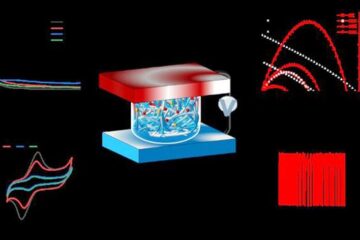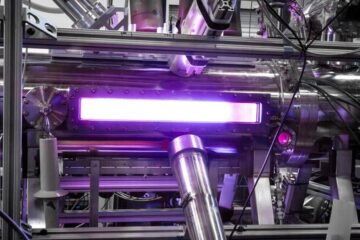Genetics of cancer cells: Computational models to sort out the chaos

“If we know this structure, we can study how cancer develops and spreads,” says del Sol. “This gives us clues about possible starting points for developing new anticancer drugs and better individual therapy for cancer patients.” The LCSB researchers recently published their results in the scientific journal “Nucleic Acids Research” (DOI: 10.1093/nar/gkv828).
“The cause of cancers are changes in the DNA,” says Sarah Killcoyne, who is doing her PhD at the University of Luxembourg and whose doctoral thesis is a core component of the research project. “Mutations arise, the chromosomes can break or reassemble themselves in the wrong order, or parts of the DNA can be lost,” Killcoyne describes the cellular catastrophe:
“In the worst case, the genome becomes completely chaotic.” The cells affected become incapable of performing their function in the body and – perhaps even worse – multiply perpetually. The result is cancer.
If we are to develop new anticancer drugs and provide personalised therapy, it is important to know the structure of DNA in cancer cells. Oncologists and scientists have isolated chromosomes from tumours and analysed them under the microscope for decades. They found that irregularities in the chromosome structure sometimes indicated the type of cancer and the corresponding therapy.
“Sequencing technologies have made the identification of many mutations more accurate, significantly improving our understanding of cancer,” Sarah Killcoyne says. “But it has been far more difficult to use these technologies for understanding the chaotic structural changes in the genome of cancer cells.”
This is because sequencing machines only deliver data about very short DNA fragments. In order to reconstruct the genome, scientists accordingly need a reference sequence – a kind of template against which to piece together the puzzle of the sequenced genome. Killcoyne continues:
“The reference sequence gives us clues to where the fragments overlap and in what order they belong together.” Since the gene sequence in cancer cells is in complete disarray, logically, there is no single reference sequence. “We developed multiple references instead,” says Sarah Killcoyne. “We applied statistical methods for our new bioinformatics approach, to generate models, or references, of chaotic genomes and to determine if they actually show us the structural changes in a tumour genome.”
These methods are of double importance to group leader del Sol, as he states: “Firstly, Sarah Killcoyne’s work is important for cancer research. After all, such models can be used to investigate the causes of genetic and molecular processes in cancer research and to develop new therapeutic approaches.
Secondly, we are interested in bioinformatics model development for reapplying it to other diseases that have complex genetic causes – such as neurodegenerative diseases like Parkinson’s. Here, too we want to better understand the relationships between genetic mutations and the resulting metabolic processes. After all, new approaches for diagnosing and treating neurodegenerative diseases are an important aim at the Luxembourg Centre for Systems Biomedicine.”
http://orbilu.uni.lu/handle/10993/22054 – Link to the scientific publication
http://wwwen.uni.lu/lcsb – Link to the Luxembourg Centre for Systems Biomedicine
http://wwwen.uni.lu/lcsb/people/antonio_del_sol_mesa – Link to personal page of Prof. del Sol
Media Contact
All latest news from the category: Life Sciences and Chemistry
Articles and reports from the Life Sciences and chemistry area deal with applied and basic research into modern biology, chemistry and human medicine.
Valuable information can be found on a range of life sciences fields including bacteriology, biochemistry, bionics, bioinformatics, biophysics, biotechnology, genetics, geobotany, human biology, marine biology, microbiology, molecular biology, cellular biology, zoology, bioinorganic chemistry, microchemistry and environmental chemistry.
Newest articles

Superradiant atoms could push the boundaries of how precisely time can be measured
Superradiant atoms can help us measure time more precisely than ever. In a new study, researchers from the University of Copenhagen present a new method for measuring the time interval,…

Ion thermoelectric conversion devices for near room temperature
The electrode sheet of the thermoelectric device consists of ionic hydrogel, which is sandwiched between the electrodes to form, and the Prussian blue on the electrode undergoes a redox reaction…

Zap Energy achieves 37-million-degree temperatures in a compact device
New publication reports record electron temperatures for a small-scale, sheared-flow-stabilized Z-pinch fusion device. In the nine decades since humans first produced fusion reactions, only a few fusion technologies have demonstrated…





















